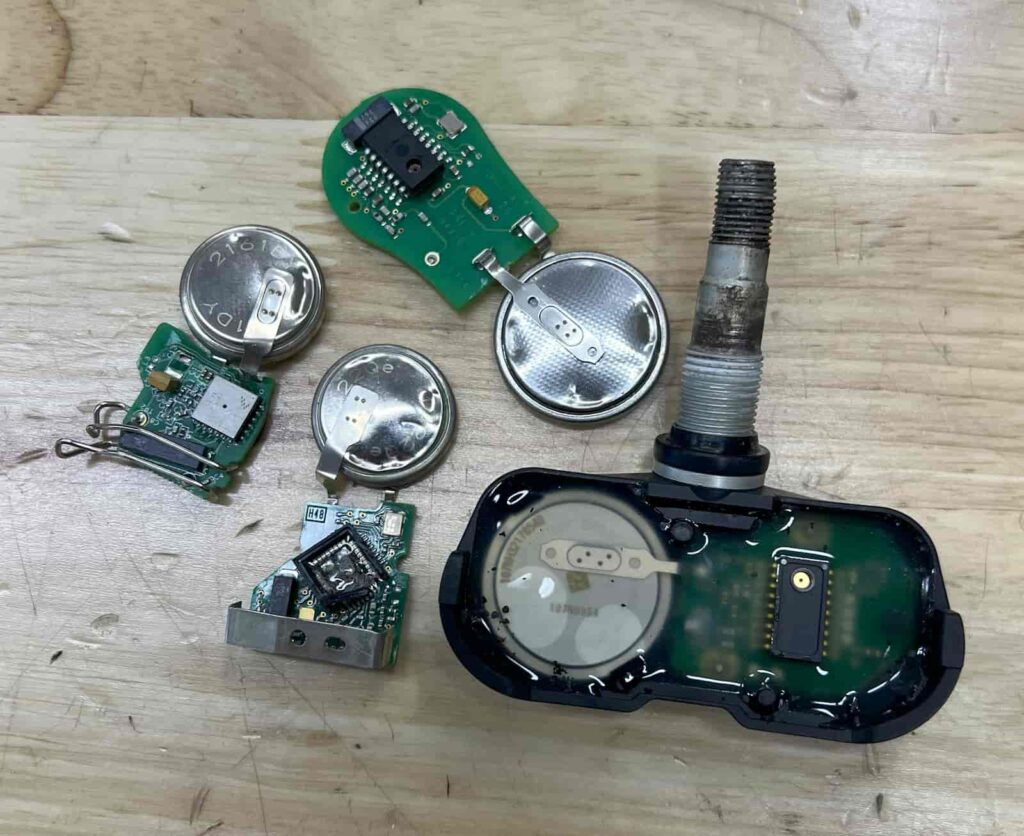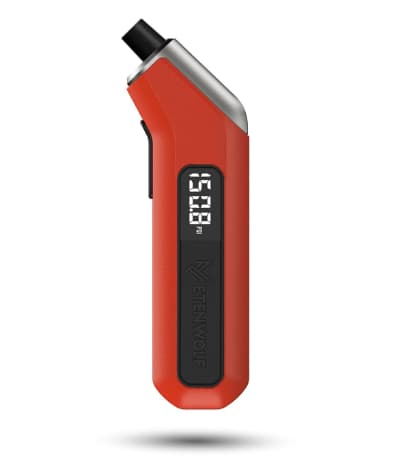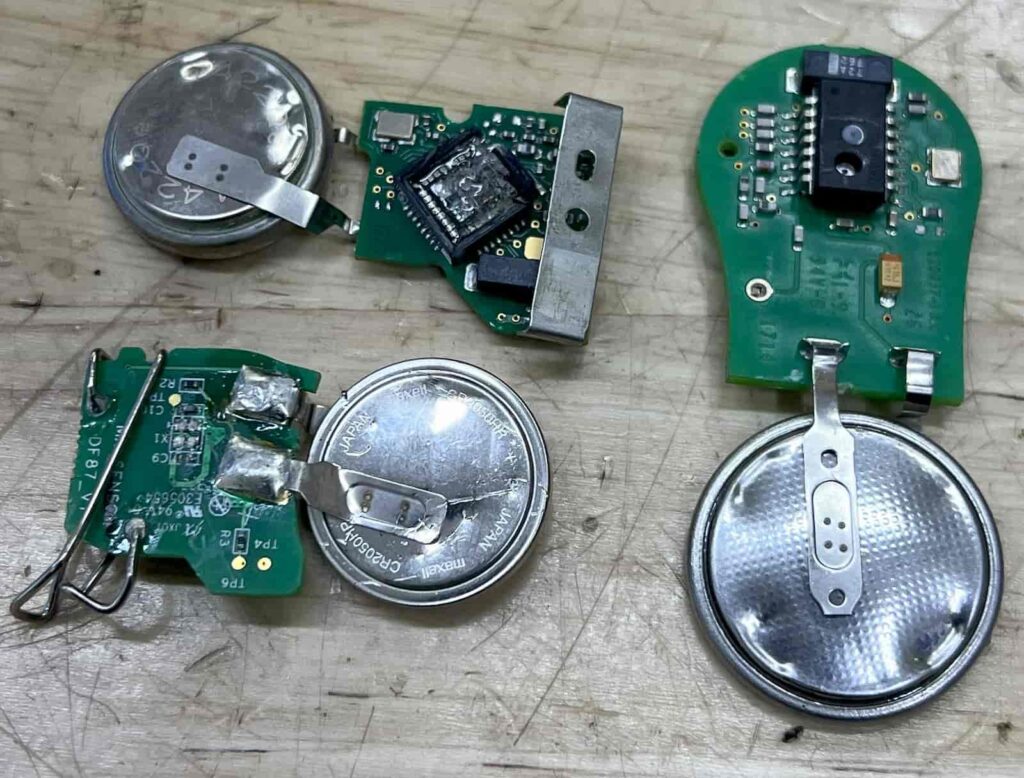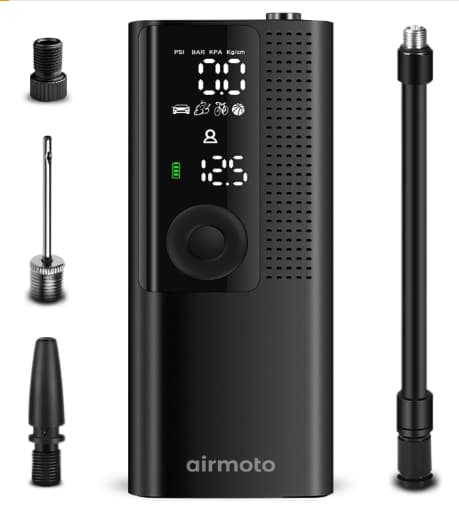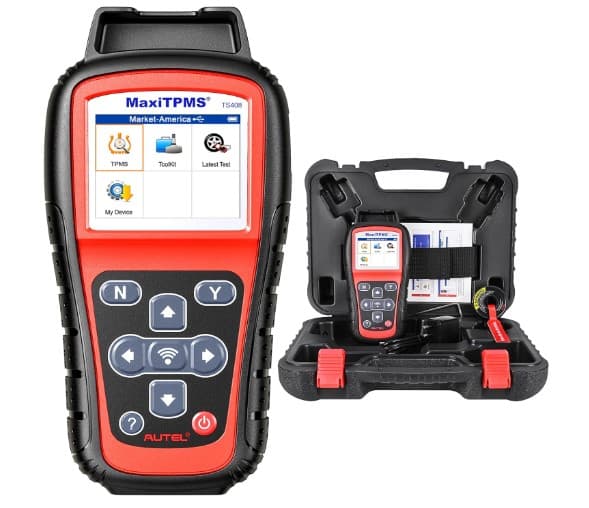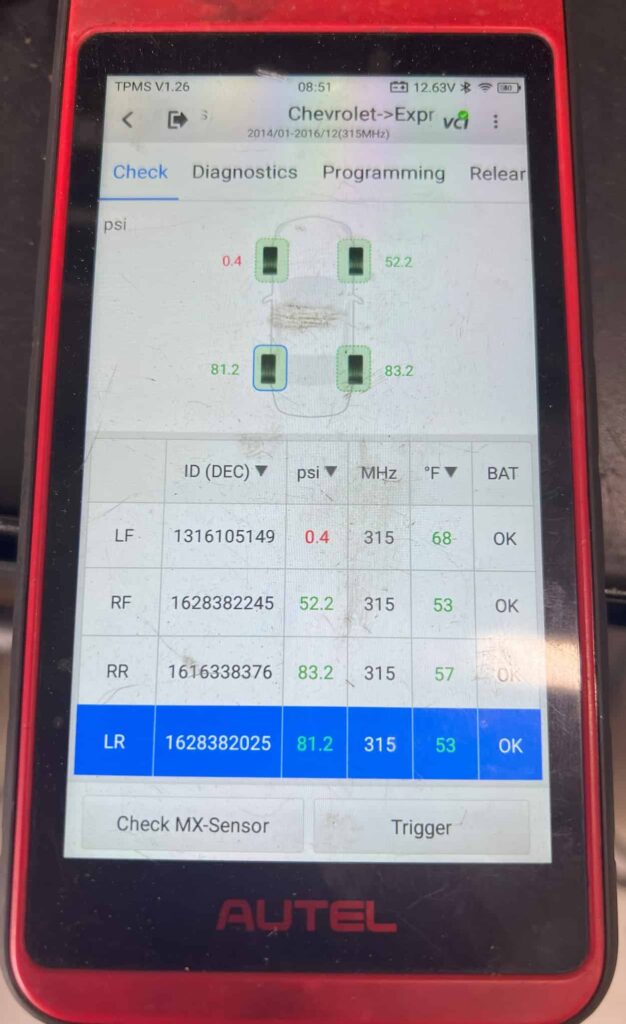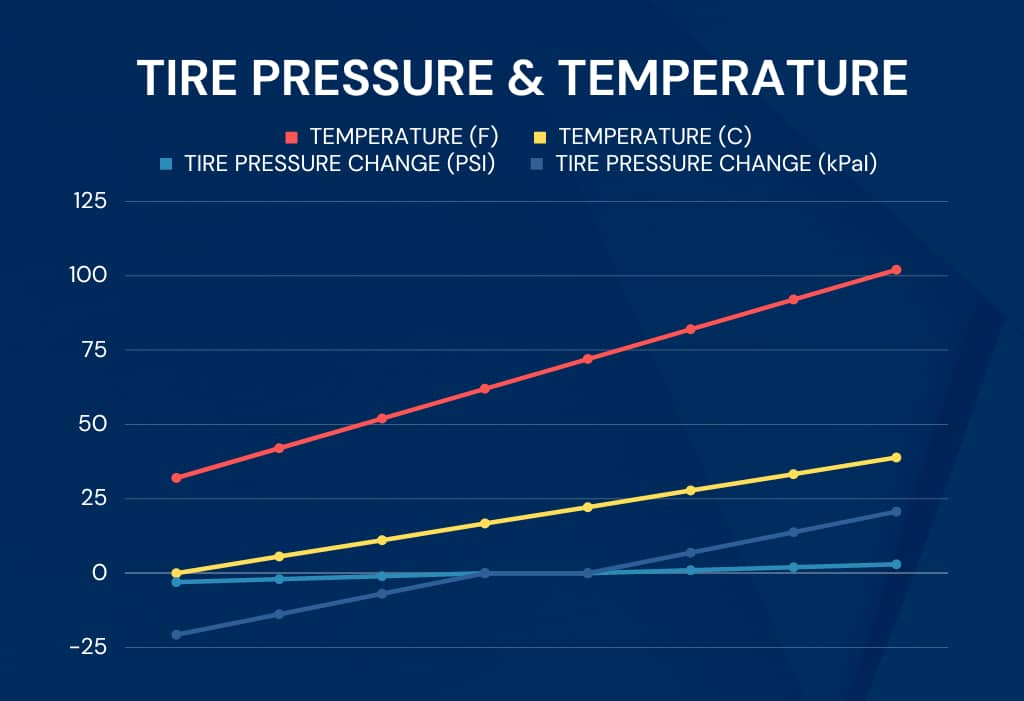Steps to Reset Genesis GV60 Tire Pressure Monitoring System
Step 1: Check and Adjust the Tire Pressure
Fill all 4 tires to the recommended tire pressure (36-39 psi)levels when the GV60 tires are cold.
Step 2: Drive
Drive the Genesis GV60 for approximately 5-10 minutes at speeds above 16 Mph (25km/h). As you drive you may see a “Drive to Display” message on the tire pressure information display screen. Continue driving the GV60 until this message disappears.
Steps to Change Genesis GV60 Tire Pressure Units
Turn the Genesis engine on or press the Start button twice without your foot on the brake.
Press the MENU button.
Use the Scroll wheel to scroll through the Menu display and select SETUP.
Scroll down and select GENERAL.
Scroll down and select UNITS.
Select TIRE AIR PRESSURE UNITS.
Choose between psi, kPa, or bar.
gENESIS gv60 wHEEL sIZE AND tIRE aIR pRESSURE
TIRE SIZE | FRONT PSI | REAR PSI |
235/55R19 | 36 | 39 |
255/50R19 | 36 | 39 |
255/45R20 | 36 | 39 |
wHAT IS THE gENESIS gv60 tpms?
The TPMS (Tire Pressure Monitoring System) in the Genesis GV60 plays a crucial role in vehicle safety. This system diligently monitors the air pressure and temperature in all four tires of the Genesis GV60. Additionally, it provides alerts to the driver in cases where a tire is losing air, low on air, or if there’s an issue with a sensor.
HOW DOES THE GENESIS GV60 TPMS WORK?
Genesis GV60’s Tire Pressure Sensors: Within each tire of the Genesis GV60, there lies a sophisticated sensor made up of a microchip, a battery, and a radio wave transmitter, all housed in a compact plastic casing with an integrated valve stem. The microchip uses battery power and continuously gauges the tire’s air pressure and temperature, while the transmitter relays this information to the Genesis GV 60’s TPMS receiver module via radio waves. This transfer of data is sent on either 315 MHz or 433 MHz waves.
TPMS Receiver Module in Genesis GV60: The Genesis GV60 TPMS receiver module is an electronic component dedicated to collecting air pressure data from each tire’s TPMS sensor. It then forwards this information to the GV60’s central processing unit, commonly referred to as the ECU (Engine Control Unit), ECM (Engine Control Module) or BCM (body control module).
Genesis GV60 ECU: The Genesis GV60 engine control unit meticulously processes incoming tire pressure data, comparing it against the manufacturer’s recommended air pressure standards. For instance, if it identifies a significant deviation, such as a tire pressure of 28 PSI against a suggested 36 PSI, it activates the Low Tire Pressure fault warning on the Genesis GV60’s dashboard display, promptly informing the driver.
GENESIS GV60 TIRE PRESSURE WHEN LOW PRESSURE INDICATOR IS ACTIVE
If your Genesis GV60 low tire pressure indicator illuminates we advise slowing down and pulling over as soon as it’s safe to do so. Inspect each tire for potential issues. Look for anything that seems irregular such as a flat tire or a cracked rim. Use a digital air pressure gauge to accurately assess the air pressure in every GV60 tire.
WHAT WILL CAUSE THE LOW TIRE ALERT TO TURN ON?
Variations in Genesis GV60 tire air pressure, either excessively high or too low.
Utilization of the Genesis GV60’s spare tire, which lacks a pressure sensor.
Low or dead batteries in the tire pressure sensors.
Issues with the GV60’s TPMS receiver or the vehicle’s Engine Control Module (ECM/ECU), including glitches in software.
Interference from electromagnetic sources, such as nearby vehicles or electronic devices (ex: alarm systems).
Abrupt shifts in the ambient air temperature.
Exceeding the Genesis GV60’s weight capacity or its towing limitations.
Application of tire chains on the tires.
Extremely heavy window tinting.
Fluctuations in the temperature of the road’s surface.
Using non OEM Genesis GV60 tires (size or brand).
Damage to TPMS sensors during tire servicing or replacement.
Not adhering to the Genesis GV60’s TPMS recalibration process post tire service or maintenance.
Tire air pressure leaks or punctures.
Physical harm to tires or wheels, such as tire bubbles or cracked wheels/rims.
Issues with improperly installed or malfunctioning tire valve stems.
ADJUSTING AIR PRESSURE IN COLD TIRES FOR ACCURATE INFLATION
Genesis GV60 tire air pressure should ONLY be adjusted when the tires are in a cold state. Inflating tires that are warm can lead to overinflation. Tires are considered cold if they haven’t been driven on yet, or if they have been stationary for a minimum of 3 hours after the last drive. If you have to drive, drive less than a mile to keep them cool.
INCREASED AIR PRESSURE READINGS IN TIRES AFTER DRIVING
As you operate your Genesis GV60, the tires warm up, leading to a natural increase in air pressure. Consequently, checking the tire pressure post-driving will result in a reading that’s higher than the actual air pressure in the tires.
IMPACT OF ALTITUDE ON TIRE PRESSURE
The likelihood of your Genesis GV60 tire pressure warning light being triggered by merely climbing to a higher altitude is low. When ascending in elevation, the internal pressure within the tires generally increases. It’s estimated that for each increase of 1,000 feet in altitude, there is a corresponding rise in tire air pressure of about 0.5 Psi.
GENESIS GV60 TIRE PRESSURE SENSOR BATTERIES
Every tire pressure sensor in the Genesis GV60 utilizes a specialized silver oxide battery, which is neither rechargeable nor replaceable. These batteries typically last between 5 to 15 years, or about 100,000-150,000 miles. If your Genesis GV60 tire pressure sensor battery is low or runs out, the entire sensor must be replaced with a new unit.
DRIVING THE GENESIS GV60 WITH THE LOW TIRE PRESSURE INDICATOR ON
We advise not to operate your Genesis GV60 when the low tire pressure indicator is active. If you have a deflating tire it’s critical to have it repaired or replaced without delay. Nevertheless, if the low tire pressure alert is triggered by a depleted battery in a tire pressure sensor, driving remains safe provided that the tires are kept at the correct air pressure.
HOW FAR CAN YOU DRIVE THE GENESIS GV60 WITH THE TPMS INDICATOR ON?
There is not a definitive distance or time frame for safely driving a Genesis GV60 when the low tire pressure indicator is illuminated.
OPTIONS FOR HANDLING TIRE PRESSURE SENSORS WHEN CHANGING WHEELS OR TIRES
If you’re considering switching the wheels or rims on your Genesis GV60, you have a few options to consider:
OPTION 1: TRANSFER OEM SENSORS
Move the existing Genesis GV60 tire pressure sensors from your old wheels to the new set.
OPTION2: NEW SENSORS
Opt for programmable tire pressure sensors, install them on the new wheels, and synchronize them with the Genesis GV60’s ECU using a TPMS programming device.
NOTE: If you replace the tires on your Genesis GV60 follow the standard TPMS reset steps. Remember, these choices apply equally if you’re using snow tires or seasonal tires.
WHY IS THE GENESIS GV60 LOW TIRE PRESSURE ALERT FLASHING?
If the tire pressure indicator on your Genesis GV60 is flashing, it signifies a communication issue between at least one tire pressure sensor and the vehicle’s ECU. This is known as a TPMS malfunction. This problem could be due to one of three factors:
A tire pressure sensor with a low or depleted battery.
Usage of the Genesis GV60’s spare tire, which lacks an integrated tire pressure sensor.
Damage to a tire pressure sensor, rendering it incapable of communicating with the vehicle.
CAN YOU DISABLE THE GENESIS GV60 TPMS?
The tire pressure monitoring system (TPMS) in the Genesis GV60 cannot be deactivated or turned off. Attempting to remove the tire pressure sensors from each tire will only result in a TPMS malfunction.
USING TPMS PROGRAMMING & DIAGNOSTIC TOOLS
If your Genesis GV60 tire pressure fault light is flashing use a TPMS diagnostic tool to identify the issue. TPMS diagnostic and programming tools are extremely effective in evaluating tire pressure sensors, capable of examining each sensor and producing a detailed report. This report includes information on the tire sensor’s current battery life, signal strength, the tire’s temperature, the sensor’s operating frequency in MHz, and its position on the GV60. Should the TPMS Sensors display issues like low battery or weak signal, they necessitate replacement.
WEATHER INDUCED TIRE PRESSURE CHANGES TRIGGERING THE TIRE ALERT
A change in weather will set off the Genesis GV60 low tire pressure alert. Tire air pressure will vary approximately 1 Psi for every 10°F shift in temperature. For example, a temperature drop of 40°F over the course of 2 months could result in the tire pressure of your Genesis GV60 dropping from 34 Psi to 30 Psi or lower. This will likely activate the low tire pressure light. To prevent this from happening, we recommend checking the air pressure in your tires more frequently as the seasons change.
WHY IS THE GENESIS GV60 TIRE LIGHT ON IF THE TIRES LOOK FINE?
Refrain from assessing the state of your Genesis GV60 tires solely based on visual inspection. If you suspect an issue, check the air pressure of your tires with a digital tire pressure gauge. If the low tire pressure light turns off following air inflation, this signifies that the Genesis GV60 TPMS is operating correctly.
STEP-BY-STEP GUIDE TO DETECTING TIRE LEAKS USING SOAPY WATER
To accurately find where a tire is leaking from, adhere to the following procedure:
Inflate the leaking tire to at least 39 Psi.
Create a solution by mixing water and liquid soap, and fill a spray bottle with it.
Generously spray the soapy water over the entire tire, paying special attention to the areas around the bead and valve stem.
Observe the tire for any bubbles that form, and follow them to their point of origin to pinpoint where the leak is located.
DOES AIR PRESSURE AFFECT THE GENESIS GV60 BATTERY RANGE
Underinflated Genesis GV60 tires heighten rolling resistance, necessitating greater energy output from the Genesis GV60’s electric motor, which in turn diminishes the vehicle’s total driving range. A mere 10% drop in tire pressure can lead to an approximate 3% decline in the vehicle’s battery range.
ARE TIRE PLUGS SAFE?
I have been a professional automotive technician for the past 10 years and believe tire plugs are a safe way to repair tires as long as they are used properly. Never use a tire plug on a tire sidewall and only have a tire plug installed on the tread of a tire as long as the tread is not too worn.
TIRE PRESSURE SENSOR FUNCTIONALITY AFTER APPLYING TIRE SEALANTS
Once a tire sealant has been applied to a leaky tire, it’s important to get the tire pressure sensor examined to ensure it’s still operating effectively.
Everything in this article is applicable to all Genesis GV60 models and versions built between 2021-2025.
Please note that this blog post contains Amazon affiliate links. This means that if you make a purchase through one of these links, we at TPMSRESET.COM may earn a small commission at no extra cost to you. We only recommend products that we personally use and believe in. Thank you for supporting us.

